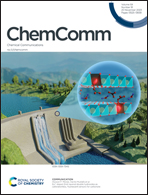Room temperature solid-state deformation induced high-density lithium grain boundaries to enhance the cycling stability of lithium metal batteries†
Abstract
Due to its high theoretical capacity and low anode potential advantages, lithium is becoming the ideal high-capacity anode of next generation batteries. Nevertheless, the satisfactory long-term cyclability of lithium metal batteries is still not achieved. Inspired by the intrinsic soft nature of the lithium metal, we have developed a simple room temperature solid-state deformation route to overcome the lithium dendrite issue, and the cycle life of the deformation treated lithium anode is 5 times that of the untreated lithium anode. It is demonstrated that microscale lithium grains are divided into nanoscale lithium grains by directional friction forces of solid-state deformation. The lithium grain boundaries are lithiophilic active sites towards Li ions, which regulate homogeneous deposition of Li ions to form a thin and stable SEI film, eventually overcoming the lithium dendrite issue and enhancing the cyclability of lithium batteries. Overcoming the challenges in conventional tedious chemical routes to grow high-density grain boundary active sites for catalysis, the room temperature solid-state deformation route will pave a new road to grow high-density grain boundaries for fuel cells and metal-based batteries.



 Please wait while we load your content...
Please wait while we load your content...